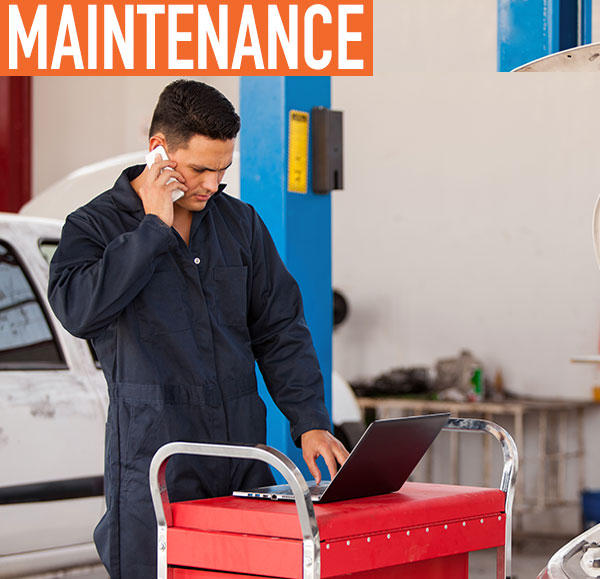The rule of changing a vehicle’s oil every three months or 3,000 miles has been blown out of the water by advances in oil and oil filter technology. That’s good news for a fleet owner’s budget, as extending the time between oil changes saves a significant amount of money, yet does not put fleet vehicles’ engines at a greater risk of issues or breakdowns.
Fully extending the amount of time between oil changes starts with making sure a fleet is equipped with the right oil and oil filter for their needs, and then routinely performing oil analysis as part of a preventive maintenance program. By doing both, an increasing number of fleets are dropping their costs by upward of 50%.
“For fleets, extending oil-change frequency can easily translate into thousands of dollars in cost savings, provided the fleet manager pairs the right oil with the right filter at the right change interval for the right vehicle,” says Scott Killips, CEO, HUBB Filters. “But, a common problem we see is that the oil filter is holding back the performance of the oil and the ability of the fleet manager to extend the life of the oil.”
WHY OIL ANALYSIS?
Analyzing your fleet’s oil goes a long way to determining if and when the oil and oil filter need changing. So many factors can play into the demands on your oil and oil filter that using a tried-and-true method for determining your oil’s health and viability is critical to maximizing its useful life. It’s also important for keeping your fleet at top performance, and virtually eliminating the possibility of engine problems related to oil cleanliness and health.
TWO APPROACHES
There are two approaches for performing oil analysis. First there is a sampling approach, in which you segment your fleet by vehicle type, daily use, etc., then you perform vehicle trials to determine the oil’s condition at current oil-change intervals and at target intervals. Ultimately, the goal is to determine necessary oil-change frequency for the various segments of your fleet.
Depending on the number of segments in your fleet, the number of oil samples you’ll need to gather could be as few as one to two dozen. Typically, each sample will cost $15 to $25, so it’s a relatively small investment, considering the potential return could reach hundreds of thousands of dollars on a 1,000-vehicle fleet.
The second approach to analyzing your fleet’s oil is more expensive, but could be justifiable depending on the number and types of vehicles in your fleet, their ages, etc. If your fleet is large, aging, and/or some of your vehicles have looming issues, the cost may be well worth it. The biggest upfront expense in this approach is the investment in an oil analysis machine, which range from approximately $60,000 to $100,000. But using this approach—which incorporates oil analysis as a component of preventive maintenance—allows you to optimize oil change frequency in real time, and better detect potential issues with the engine when the vehicle is being serviced, Killips says.
OIL ANALYSIS CONCLUSIONS
Analyzing your oil ferrets out if and how much acid is present. As oil degrades, it produces acids as by-products, and those acids can cause engine corrosion. Factors such as frequently turning the engine off and on—as delivery trucks often do—can make acids build up more quickly.
The two acid-related measurements fleets typically gauge:
- Total acid number (TAN), which tells you the amount of acid in the oil.
- Total base number (TBN), which determines the oil’s ability to neutralize acid viscosity. Some of the contaminants that viscosity points to are wear metals, fuel, coolant, debris, and water. Examination of those contaminants can indicate specific issues with an engine, camshaft, or any number of other parts of your vehicles’ mechanical system.
If the sticker price on an oil analysis machine is cost prohibitive, a good option is to send your oil samples to an outside lab for testing. The cost ranges from about $15 to $25 per sample, a far cry from the price of your own machine. The downside is, it can take a couple of weeks for you to receive the lab results. Whether you’re considering purchasing a machine or not, sending the oil to a lab is a good way of learning the ins and outs of oil analysis, and whether or not you can justify purchasing a machine.
THE BEST OIL AND FILTER
Several variables factor into choosing the best oil and filter for your vehicles. Some fleets have a variety of makes and models including light-, medium-, and heavy-duty trucks and vans. Start by talking with oil and oil filter vendors to hone in on the best selections. It’s also worthwhile to call on friends and associates who own or manage fleets to benefit from their experience and insight. Then, when you have your oil analyzed, you’ll gain valuable information about whether the oil and filter you’ve chosen is the best for that vehicle, or if another choice would be better.
Reusable filters provide fresh options in today’s market that might be worth considering. Conventional filters cost far less than reusable filters but conventional filters require more frequent oil changes due to the oil-absorbing paper media. The HUBB filter is one reusable filter with a stainless steel screen that has proven to be successful extending oil drain intervals for fleets. According to Killips “the ability of HUBB to successfully extend an oil drain interval is based upon its filter-in-a-filter and dual pressure differential valve design. The HUBB design traps more contaminants and effectively increases contaminant storage. Those contaminants then are spread across the screen’s surface rather than collecting at its bottom—as with conventional paper filters. This keeps oil cleaner longer.”
Several variables also factor into choosing the best oil. Some vehicles require synthetic oil, while others call for synthetic blends, conventional, or reconditioned oils. First check the manufacturer’s recommendations, then follow suit by reaching out to vendors, associates, and peers.
Performing routine analysis can also:
- Protect your fleet’s engines and reduce wear
- Help your vehicles spend less time in the shop and more time on the road
- Detect maintenance issues before they lead to serious problems
Now might be the right time for you to seriously consider routinely analyzing your fleet vehicles’ oil. If you opt to, your trucks, drivers, customers, and wallet will be glad you did.
FOR MORE INFORMATION:
HUBB Filters are reusable and geared to handle the demands of light- and medium-duty trucks equipped for a spin-on filter. The patented design is able to improve oil flow by a factor of five, capture more combustion contaminants, and keep oil cleaner for longer. The filters are backed by a 100,000-mile or 5,000-hour performance guarantee. Find out more about HUBB Filters, visit www.hubbfilters.com.
_______________________________________________________________________
MODERN WORKTRUCK SOLUTIONS: NOVEMBER 2017 ISSUE
Did you enjoy this article?
Subscribe to the FREE Digital Edition of Modern WorkTruck Solutions magazine.
![]()







